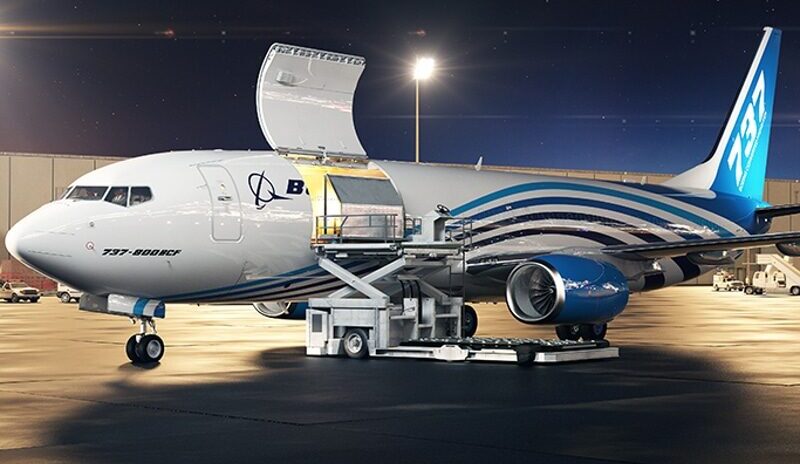Aerospace
Boeing Forecasts Air Cargo Traffic to Increase Twofold Over Next 20 Years
Boeing Forecasts Air Cargo Traffic to Increase Twofold Over Next 20 Years

Boeing anticipates significant demand for air cargo services until 2041, with traffic doubling and the global fleet of freighters increasing by more than 60%. Boeing published information from its 2022 World Air Cargo Forecast (WACF), a biannual in-depth analysis of evolving market dynamics.
Boeing Forecasts Demand for More than 41,000 New Airplanes by 2041(Opens in a new browser tab)
The world’s cargo fleet would need close to 2,800 newly produced and converted freighters for expansion and replacement by the year 2041, according to the 2022 WACF. In order to satisfy demand, operators will need to move to more capable, fuel-efficient, and sustainable jets like the 777-8 Freighter, according to the Boeing prediction, since cargo volume is expected to double during the projected period.
New production freighters will make up one-third of deliveries, while the remaining two-thirds will be freighter conversions, like the 737-800 Boeing Converted Freighter (BCF), giving carriers more flexibility in both mature and developing markets.
Boeing Delivers on 100th 737-800 BCF Order to AerCap(Opens in a new browser tab)
The 2022 WACF also provides these insights about the cargo market through 2041:
- The Asia-Pacific region will take delivery of nearly 40% of all freighters, including new and converted freighters.
- While dedicated freighters are 8% of the total commercial airplane fleet, they continue to carry more than half of all air cargo, with passenger airplanes carrying the remainder as belly cargo.
- The global freighter fleet will grow by more than 1,300 airplanes to more than 3,600 jets over the next two decades.

Aerospace
When Ratan Tata was denied entry to the airfield at the Aero India show, he waited

During our visit to Aero India 2019, we had the unexpected opportunity to see Ratan Tata at the event, which was a thrilling moment for us. However, there was a surprising hiccup when the security staff didn’t allow him to enter due to a lack of a security pass.
Despite this, he remained calm and patiently waited for about 20 minutes until a member of the Tata team brought him the required pass, after which he calmly proceeded inside. It was a humbling sight, showcasing his composed demeanor even in such situations.
Ratan Tata ji is not only a renowned industrialist but also a trained pilot, holding a pilot’s license. In 2007, he became the first Indian civilian to fly the F-16 Falcon during the Aero India show in Bangalore—a proud moment for the nation.
His passion for aviation extended beyond flying, as he played a key role in shaping India’s aerospace industry. Under his leadership, Tata ventured into manufacturing and maintaining aerospace components while upholding its legacy of quality. Notably, Tata’s collaboration with Airbus to develop and manufacture the C295 aircraft is a testament to its growing influence in the sector.
-

 Aviation2 months ago
Aviation2 months agoMicrosoft Flight Simulator Raises $3 Million to Bring Back the An-225 Mriya
-

 Airlines2 months ago
Airlines2 months agoQantas Engineers Stage Walkout Over Cost of Living Concerns
-

 Airlines2 months ago
Airlines2 months agoQatar Citizens Can Travel to the United States Without a Visa
-

 Aviation2 months ago
Aviation2 months agoQatar Airways bans these new Electronic Devices on plane
-

 Airlines2 months ago
Airlines2 months agoJapan Airlines Rolls Out Free Domestic Flights to International Passengers
-

 Defence2 months ago
Defence2 months agoWhich Country Has the Largest Fleet of Fighter Aircraft?
-

 Airport2 months ago
Airport2 months agoWestern Sydney Airport Welcomes Its First Plane After 6 Years of construction
-

 Aviation2 months ago
Aviation2 months agoDid you know ? Once Boeing 747 carried 1088 passenger in 1991








